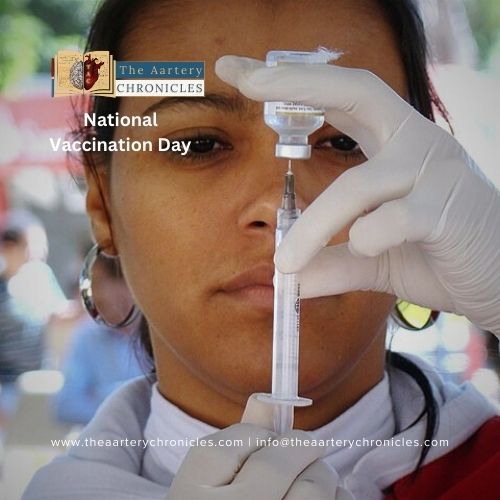Understanding and Preventing Intestinal Worm Infestation
In the intricate landscape of human health, there exists a hidden menace that often goes unnoticed until its effects become palpable – intestinal worms. These parasitic organisms, residing within the human digestive system, can wreak havoc on health if left unchecked. Despite advances in medical science, intestinal worm infections continue to affect millions worldwide, particularly in regions with poor sanitation and limited access to healthcare.
Understanding the nature of these parasites, their modes of transmission, symptoms, and preventive measures is crucial in combating this pervasive yet often overlooked health issue.
The Culprits: What are Intestinal Worms?
Intestinal parasites and worms are organisms that inhabit the gastrointestinal tracts of humans and animals. These parasites can include various species of worms, such as roundworms (nematodes), tapeworms (cestodes), hookworms, whipworms, and threadworms (pinworms), as well as single-celled organisms like protozoa. Intestinal parasites rely on their hosts for food and shelter, often causing unpleasant symptoms and health complications. They can be transmitted through contaminated food, water, soil, or direct contact with infected individuals or animals. [1]
The Diverse Castes of Intestinal Worms
Intestinal worms, also known as helminths, encompass a diverse variety of parasitic organisms that inhabit the gastrointestinal tract. The most common types of intestinal worms that affect humans include:
1. Flatworms
A medical abortion, also known as a medication abortion, is a non-surgical method of terminating a pregnancy in the early stages using prescription pills. It typically involves the use of the medicines mifepristone and misoprostol to induce miscarriage-like symptoms and terminate the pregnancy.
Flatworms, also known as Platyhelminthes, are a group of invertebrate animals characterized by their flattened, ribbon-like bodies. Flatworms exhibit a wide range of lifestyles, including free-living and parasitic forms. Parasitic forms of flatworm include species such as tapeworms (cestodes) and flukes (trematodes).
- Tapeworm: Humans can acquire tapeworm infections through the ingestion of tapeworm eggs or larvae, typically from contaminated food, water, or surfaces. Tapeworm infections can result from consuming undercooked or raw meat and fish harboring tapeworm larvae. Once ingested, tapeworms develop and attach themselves to the intestinal wall, where they can thrive and produce eggs.
- Flukes: Fluke infections can occur through the ingestion of contaminated water or the consumption of aquatic plants or fish containing the parasites. Over 70 varieties of flukes can inhabit the human intestinal tract. [2]
2. Roundworms
Roundworms, also known as nematodes, are a type of parasitic worm with round, long, cylindrical bodies that can infest the human intestine. Common examples include Ascaris lumbricoides, Enterobius vermicularis (pinworm), Trichuris trichiura (whipworm), hookworms, and Strongyloides stercoralis.
Hookworm, ascariasis, and whipworm are all types of roundworm infections known as soil-transmitted helminths (STH). These parasitic worms are transmitted through contaminated soil. [3]
- Ascaris lumbricoides: The human roundworm, commonly known as the giant intestinal roundworm, infects millions of people worldwide. Ingesting food or water contaminated with Ascaris eggs can lead to infection, causing symptoms such as abdominal discomfort, diarrhoea, and bloody stools. [4]
- Hookworm: Hookworm species such as Necator americanus and Ancylostoma duodenale can infect humans by penetrating the skin, usually through contact with contaminated soil. These parasites migrate to the intestines, where they attach to the intestinal wall and feed on blood, leading to symptoms like diarrhoea, anaemia, and abdominal pain. [3]
- Trichuris trichiura (whipworm): Whipworm infections occur through ingesting eggs from contaminated soil or water. These parasites embed their long, whip-like bodies into the lining of the colon, leading to symptoms such as diarrhoea, and abdominal pain, and faecal incontinence. [1]
- Enterobius vermicularis (Pinworm): The pinworm, also known as threadworm, is a common intestinal parasite in humans, particularly children. Infection occurs through the ingestion of pinworm eggs, which are often transferred from contaminated surfaces to the mouth. Pinworm infections typically cause anal itching, especially at night. [5]
Modes of Transmission
Intestinal worm infections usually happen when individuals swallow worm eggs or larvae, commonly found in contaminated food, water, or soil. The lack of proper sanitation, including inadequate handwashing and improper waste management, plays a major role in the transmission of these parasites. Moreover, consuming undercooked or raw meat containing cysts or larvae can result in tapeworm infections. Engaging in activities like walking barefoot in regions where hookworm larvae are prevalent also raises the likelihood of exposure. [6, 7]
Symptoms of Intestinal Parasitic Infections
The symptoms of intestinal worm infections can vary depending on the type and severity of the infestation. Common signs include:
- Nausea and vomiting
- Abdominal pain
- Diarrhoea, dysentery, or bloody stool
- Anaemia
- Weight loss
- Anal itching
- Vaginal itching
- Visible eggs or worms in stool [1,7]
It is important to note that not all individuals with intestinal worm infections will experience symptoms, especially in mild or early-stage infections. However, persistent, or severe symptoms should prompt medical evaluation and appropriate treatment to prevent any complications.
Presence of Intestinal Worms in the Stool
Detecting worms in stool can vary depending on the type of worm infection and the stage of the infestation. However, here are some general signs that may indicate the presence of worms in stool:
- Visible worms: In some cases, adult worms or their segments may be visible in the stool. These can vary in appearance depending on the type of worm and may resemble small white or off-white threads, grains of rice, or flat segments.
- Eggs: While adult worms themselves may not be visible, their eggs may be present in the stool. These eggs are usually microscopic and may require laboratory testing or microscopic examination for detection.
- Itching or irritation: Some worm infections, such as pinworms, may cause itching or irritation around the anus, particularly at night when female worms lay eggs in the area. This itching may be accompanied by visible eggs or worms around the anus. [1]
Complications of Intestinal Worms
Untreated intestinal worm infection may weaken the immune system and may lead to potential health complications such as:
- Malnutrition
- Iron deficiency anaemia (due to blood loss in hookworm infection)
- Dehydration (due to diarrhoea)
- Appendicitis
- Cholangitis
- Cholecystitis
- Pancreatitis
- Rectal prolapse (the rectum slips down inside the anus)
- Organ damage (if the tapeworm migrates to different organs like the brain, heart, lungs, or liver) [1]
Chronic infections may exacerbate existing health conditions and compromise the body’s immune response, making individuals more susceptible to other illnesses.
Prevention Strategies to Avoid Intestinal Worm Infections
Preventing intestinal worm infections requires a multifaceted approach addressing sanitation, hygiene, and targeted interventions. Key preventive measures include:
- Improved Sanitation: Access to clean water and proper sanitation facilities is crucial in reducing the transmission of intestinal worms. Efforts to upgrade infrastructure and implement sanitation initiatives in at-risk communities can significantly lower infection rates.
- Hygiene Education: Educating individuals about the importance of handwashing, especially before handling food and after using the toilet, is essential in preventing the spread of worm eggs and larvae. Promoting hygienic practices in schools, households, and healthcare facilities can empower communities to protect themselves from infection.
- Safe food handling: Ensuring that food is thoroughly cooked, particularly meat, fish, and poultry, helps destroy any parasites present. Proper washing and peeling of fruits and vegetables can also minimize the risk of contamination with worm eggs or larvae.
- Use of closed footwear and gloves: Encouraging the use of closed footwear and gloves, especially in areas where hookworm infections are prevalent, can prevent larvae from penetrating the skin and entering the body.
- Regular deworming programs: Mass deworming initiatives, especially in high-risk populations such as school-age children, can help reduce the burden of intestinal worm infections. Administering anthelmintic medications at regular intervals can effectively treat existing infections and prevent reinfection. [7]
- Intestinal Parasites & Worms: Symptoms, Types, Treatment (clevelandclinic.org)
- Tapeworm Infection: Symptoms, Causes & Treatment (clevelandclinic.org)
- Hookworm Disease: What Is It, Causes, Symptoms & Treatment (clevelandclinic.org)
- Ascariasis - Symptoms & causes - Mayo Clinic
- Pinworms: Symptoms, Causes, Treatments (clevelandclinic.org)
- CDC - Ascariasis
- Soil-transmitted helminth infections (who.int)

Author: Dr. Anjali Singh
- Medicine
- Nutrition And Diet














